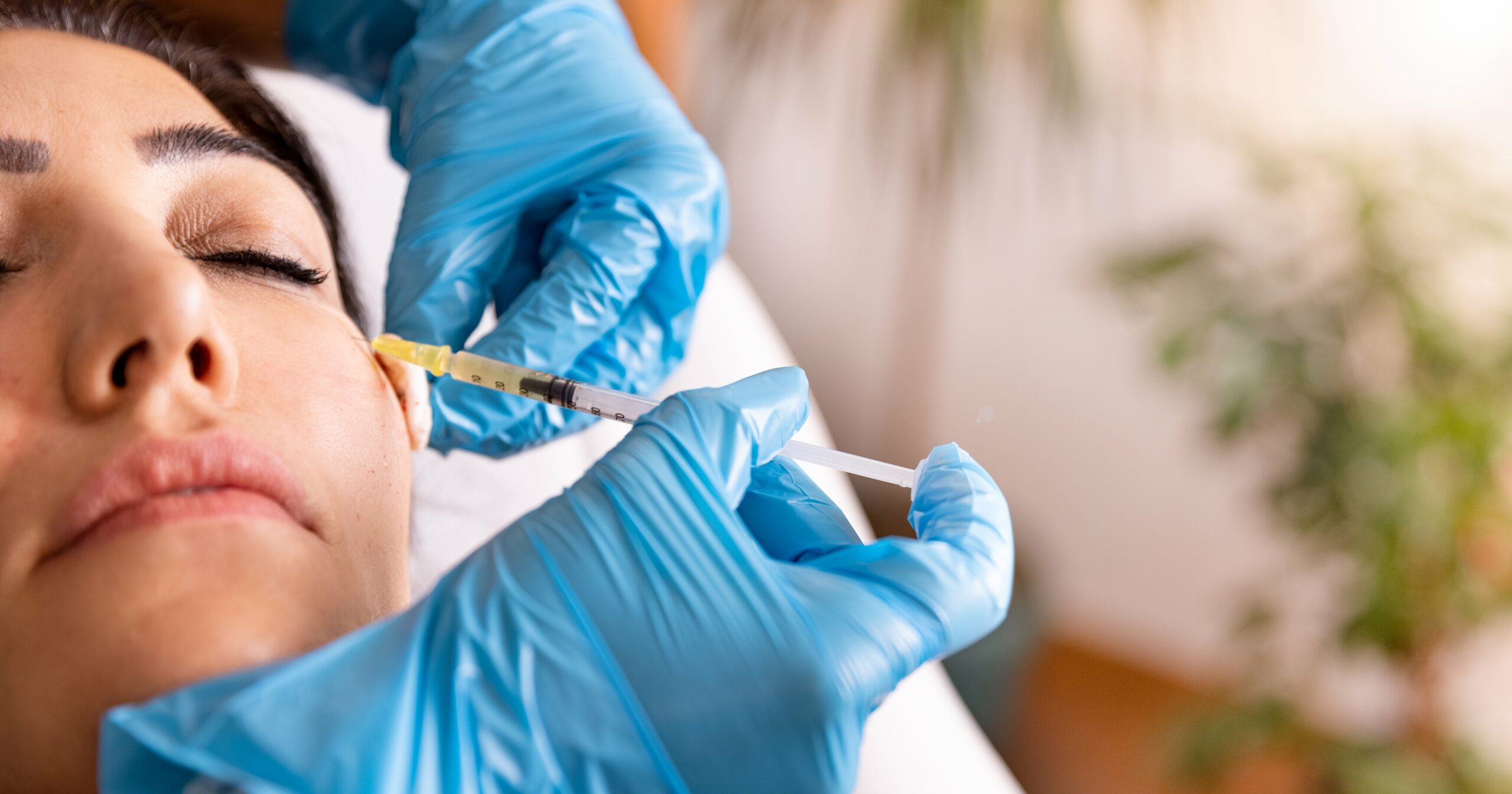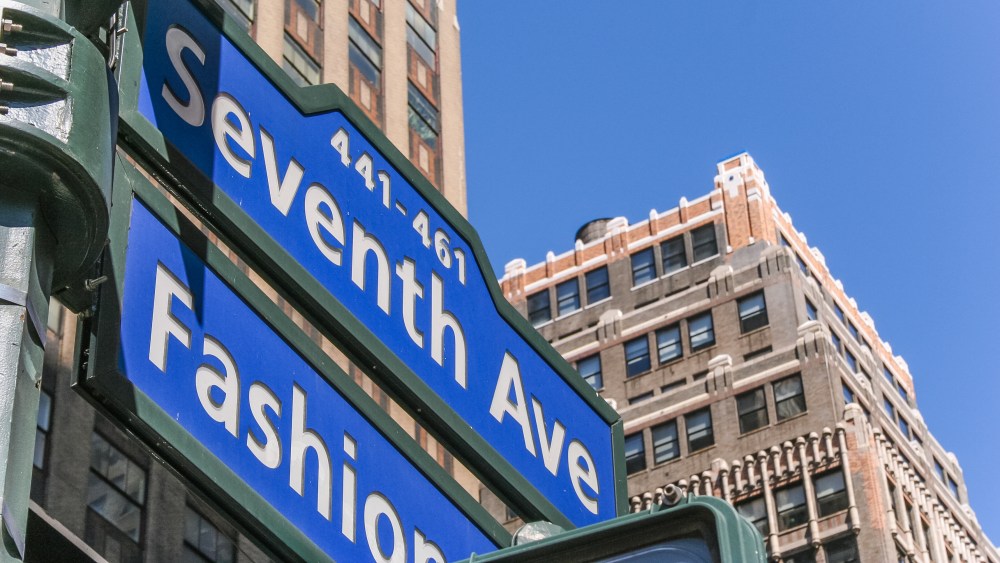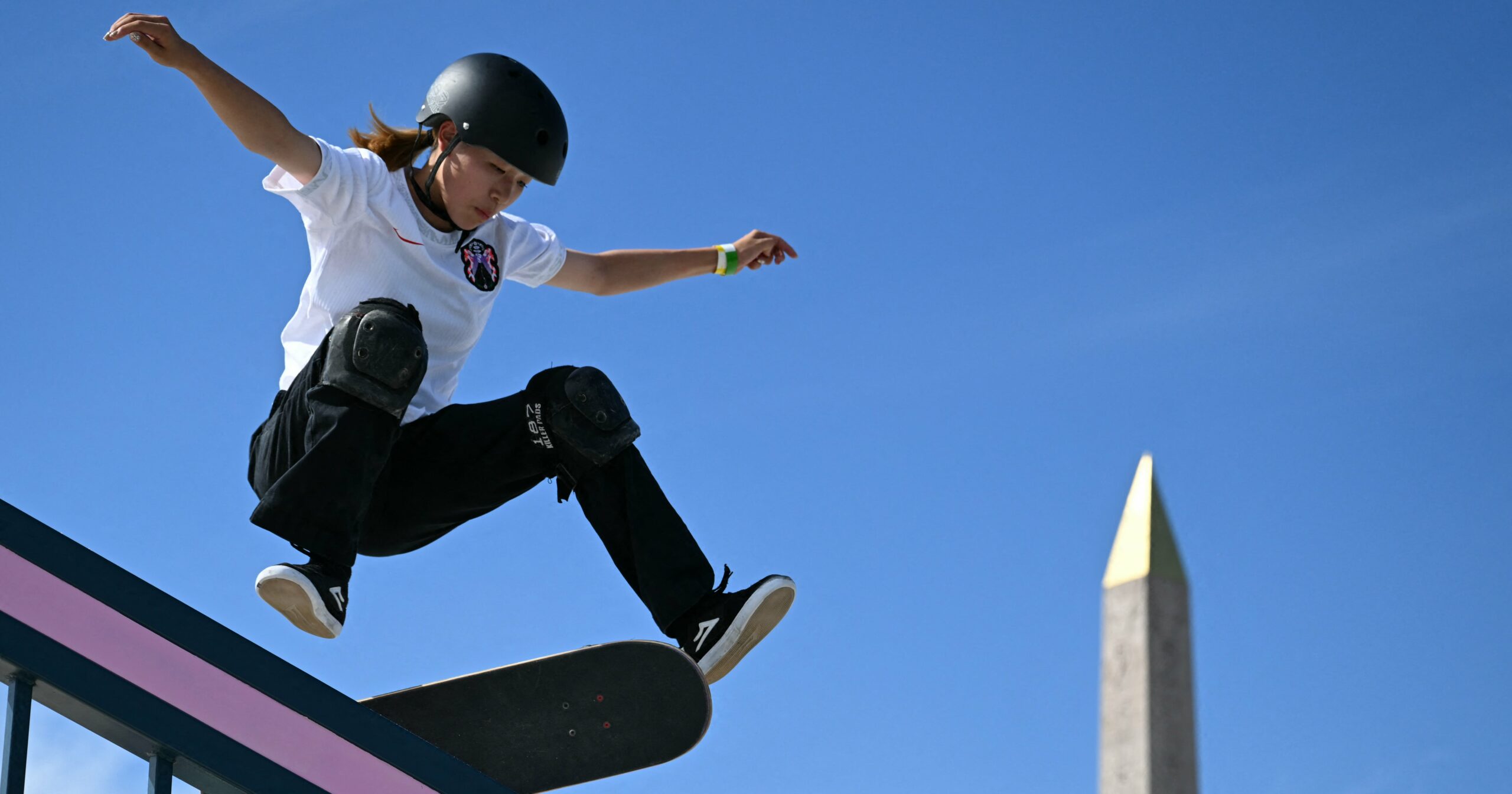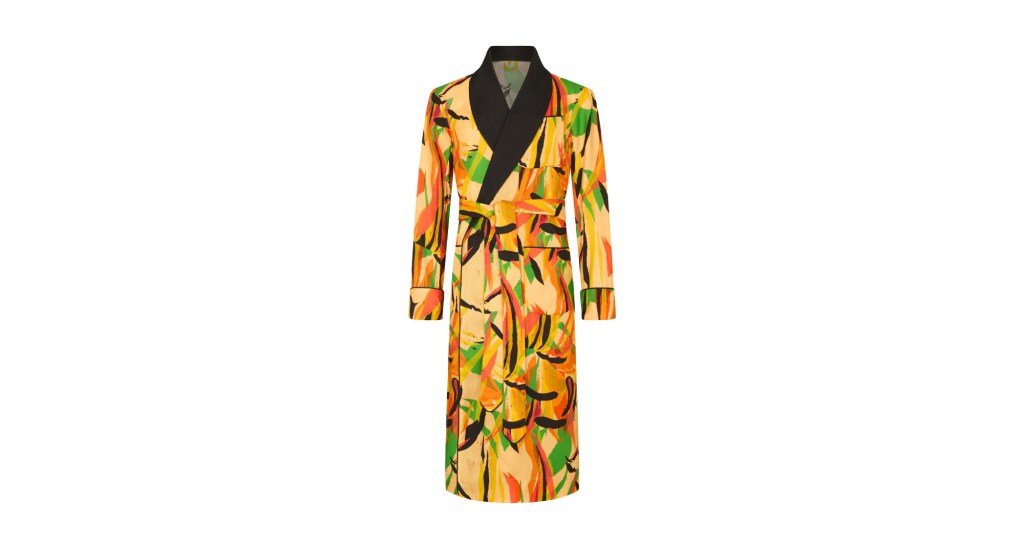Image Source: Getty / Anna Efetova
While modern dermal fillers have been around for nearly two decades, they’ve seen a huge bump in popularity in the last few years. And it seems the stigma around facial enhancements like filler and Botox is steadily decreasing (it’s about time, TBH). While celebrities like Kylie Jenner and Bella Hadid have brought into the mainstream the use of filler to accentuate areas of their face, there are so many ways to use dermal fillers beyond just plumping up the lips and contouring the cheeks.
It’s also important to know that not all dermal fillers are created equal – some are better suited for different parts of the body, which should be taken into consideration when talking to your dermatologist about your desired look.
Because navigating the world of dermal fillers can be a little daunting, we tapped several board-certified dermatologists and plastic surgeons to help break down everything you need to know about every different type of dermal filler on the market.
Experts Featured in This Article
says Rachel Westbay, MD, FAAD, is a board-certified dermatologist at Marmur Medical in New York City.
Nancy Samolitis, MD, FAAD is a board-certified dermatologist and the owner of Facile Dermatology in Los Angeles.
Elyse Love, MD, FAAD, is a board-certified dermatologist based in New York City.
Corey L. Hartman, MD, FAAD, is a board-certified dermatologist based in Birmingham, Alabama.
Ellen Marmur, MD, FAAD, is a board-certified dermatologist and the founder of Marmur Medical. She is also the founder of MMSkincare.
Michelle Henry, MD, FAAD, is a board-certified dermatologist based in New York City.
What Is Dermal Filler?
Dermal fillers are injections placed under the skin that are administered nonsurgically. They can be made from a few different substances; the most popular is hyaluronic acid, but they can also be made from calcium hydroxylapatite (CaHA), poly-L-lactic acid (PLLA), or the rarely used polymethylmethacrylate (PMMA).
Dermal fillers are used to add volume to sagging skin, plump and contour areas of the face, fix any asymmetries in the face, and smooth wrinkles and creases in the face and body.
Where Can You Use Filler?
Dermal filler is most often used in the face but can also be injected into the body in places like the upper hands, fingers, and earlobes. Fillers can be used in the lips, jawline, chin, temples, nasolabial folds, “marionette” lines, undereyes, bridge of the nose (i.e., a liquid rhinoplasty), upper forehead, and cheeks.
It’s worth noting that all fillers are FDA approved for certain uses, but many doctors have “off label” uses they like for certain types of fillers. This is another reason you should always choose a board-certified dermatologist or plastic surgeon for your fillers since they have extensive training and knowledge on the anatomy of the face and will be able to confidently recommend both on- and off-label placements.
How Much Does Filler Cost?
Like any other cosmetic procedure, the price will vary depending on where you’re located (cities are usually more expensive). Filler cost is determined by how many syringes (or units) are used, and one syringe can range anywhere from $700 to $1,200. How many syringes get used will be dictated by the area you’re treating and the look you’re trying to achieve.
How Long Does Filler Last?
It really depends on the type of filler used and where it’s placed. For example, filler in the lips is likely going to break down faster than filler in the temples because you’re using and moving your lips constantly. Lip fillers typically last anywhere from four to six months, whereas filler in your undereyes can last around a year.
It also depends on the type of filler your doctor chooses to use (don’t worry, we break them all down below). Certain brands of fillers are known to last for different amounts of time, usually because of the material used to make them, the weight of the molecules, and the filler texture (think: smooth vs. granular). The staying power and type of result a filler gives also come down to their G prime rating. This refers to the viscosity and elasticity of the product – meaning how runny and pliable it is. The lower the G prime, the more watery and flexible the filler is; a higher rating means the filler is more dense and sturdy.
To get a sense of some of the timelines you’re looking at, here are a few common filler types you’ll see used in areas like the lips, undereyes, and smile lines. “Both Restylane Refyne and Restylane Defyne have been shown to maintain effectiveness for the treatment of laugh lines for up to 12 months,” says dermatologist Rachel Westbay, MD, FAAD, whereas the go-to for lip filler “Restylane Kysse is crosslinked with BDDE, an ingredient that helps form a network with the hyaluronic acid to create a result that lasts up to one year. This is in contrast to most other fillers used in the lips, which tend to have a duration of approximately six months.”
According to dermatologist Nancy Samolitis, MD, FAAD, the newer RHA (Resilient Hyaluronic Acid) collection is said to last anywhere from nine to 18 months. Dermatologist Elyse Love, MD, FAAD, adds that, “Radiesse is a biostimulatory filler that stimulates collagen and elastin production. It provides immediate results and continued improvement for four to nine months after treatment.” Dr. Westbay says results from Radiesse last longer than hyaluronic-acid fillers, usually between 18 to 24 months.
Image Source: Getty / fatihhoca
Keep reading for a comprehensive breakdown of every single type of dermal filler and what doctors use them for, as well as the injection’s downtime and potential side effects.
Types of Filler
Restylane
What it’s made of: Hyaluronic acid
Why choose Restylane? Restylane was the very first filler developed by Galderma, so it’s tried and true by practitioners. As dermatologist Corey L. Hartman, MD, FAAD, explains, there are also a range of filler types under Restylane (outlined below) that are designed to address multiple volume needs and areas. Restylane is granular and more cohesive in terms of texture, which Dr. Westbay says allows it to stay in place better, making it ideal for adding volume in facial areas that are volume deficient. Restylane is also arguably easier to mold than other filler brands, which allows the injector to better create shapes and contours.
Restylane-L
Injection sites: Undereye area. “It is best for the tear-trough area because it gives a subtle lift without the Tyndall effect,” Dr. Hartman says, referring to the blueish effect that can impact undereye filler.
Restylane Silk
Injection sites: Lips. “I use it in patients who want extremely natural and subtle results,” Dr. Love says. “It’s a great option for those who want to fill out the shape of their lips but do not want any additional pout or plumpness.”
Restylane Lyft
Injection sites: Cheekbones, temples, upper forehead, jawline, chin, puppet lines, nasolabial folds, and lips. “It is my number one go-to and the most versatile filler for almost any area on the face and body to provide predictable, hydrated volume,” says dermatologist Ellen Marmur, MD, FAAD. “I do not use it in the nose or directly under the eyes.”
Restylane Refyne
Injection sites: Smile lines and lips. “This is best for the nasolabial folds and marionette lines in patients with crinkles that lack good skin texture,” Dr. Hartman says. According to Dr. Westbay, it’s better suited for lines that are not as profound or deep, but rather superficial lines that are off label (including fine lines on the sides of the cheeks, fine lines around the mouth, and lines around the lip corners).
Restylane Defyne
Injection sites: Chin and jawline. “Defyne is a softer option compared to Lyft,” Dr. Love says. “It is great for adding structure to the lower face.”
Restylane Kysse
Injection sites: Lips. “It is intended for lip augmentation and the correction of wrinkles above the lips,” Dr. Westbay says. “It succeeds at providing a result that is soft and natural feeling while still conveying a natural fullness that additionally has the benefit of being long lasting.”
Restylane Contour
Injection sites: Cheekbones, jawline, temples, and tear troughs. As Dr. Marmur puts it, the purpose of Contour is in the name: contouring the face.
Juvéderm
What it’s made of: Hyaluronic acid
Why choose Juvéderm? Juvéderm is backed by the makers of Botox (Allergan) and provide long-lasting fillers that give natural results. Dr. Westbay says because Juvéderm has a smoother texture, some feel it’s superior at addressing finer lines and wrinkles in tight facial areas. This filler also tends to create a more “plump” effect than Restylane products, so “many injectors like to place Juvéderm in areas we want to swell, hydrate, or be more pillowy, such as the lips, temples, and midcheeks, but do not use it in areas such as the tear trough (under the eyes) or on the jawline.”
Juvéderm XC
Injection sites: Lips, temples, and fine lines around the mouth. As Dr. Love puts it, “This is for the Kylie Jenner lip. It’s for the patient who wants their lips done and isn’t ashamed for people to know they had their lips done.”
Voluma
Injection sites: Lateral cheeks, temples, and jawline. “It is the thickest and most structurally supportive [filler in the Juvéderm family],” Dr. Westbay says. “It is indicated for cheek augmentation to correct age-related volume deficit in the midface, and the cheeks are definitely the place it is used most often.”
Volbella
Injection sites: Perioral lines and lips. “It’s great for subtle lip enhancement for those who don’t want volume but rather to smooth perioral lines and restore the structure of the lips,” Dr. Hartman says.
Vollure
Injection sites: Nasolabial folds, lips, tear troughs, and marionette lines. “It is one of the most versatile fillers available,” Dr. Westbay says. “It can be considered an ideal ‘middle of the road’ filler. It can be an excellent choice when patients need to stick to a more conservative budget, as it allows the treatment of more than one area without the need to purchase another syringe of filler.”
RHA Collection
What it’s made of: Hyaluronic acid
Why choose an RHA filler? The RHA collection is the newest FDA-approved filler on the market and the first and only Resilient Hyaluronic Acid filler approved for dynamic wrinkles and folds. It is designed to be resilient enough to adapt to your facial movement, which may provide a natural look at rest and in motion.
RHA 2
Injection sites: Fine lines around the mouth, lips, neck, earlobes, and fingers. “It is a very light and smooth filler that can be injected more superficially than some other fillers in this area,” Dr. Samolitis says. “Fine lines can be treated without leaving bumps or excess fullness behind.”
RHA 3
Injection sites: Nasolabial folds and marionette lines. “It is specifically designed for areas of the face with a lot of movement,” Dr. Samolitis says. “The product is soft and elastic, so it doesn’t cause stiffness or look unnatural with facial expressions.”
RHA 4
Injection sites: Cheeks, chin, and jawline. Dr. Samolitis says, “It has the softness and natural movement like the other RHA products but is a thicker gel to produce more volume in areas where we are targeting facial contour.” Dr. Marmur agrees, adding, “I layer lighter fillers over the deeper RHA4.”
Revanesse Versa
What it’s made of: Hyaluronic acid
Why choose Revanesse Versa? The key factor that seems to make people choose Versa over other HA fillers is it could have less post-injection swelling. It is also made without any animal products or byproducts and is formulated without lidocaine.
Injection sites: Nasolabial folds and lips. Revanesse Versa is indicated for injection into the mid to deep dermis for correction of moderate to severe facial wrinkles and folds, such as nasolabial folds.
Belotero Balance
What it’s made of: Hyaluronic acid
Why choose Belotero Balance? Belotero Balance is an especially subtle filler. Dr. Marmur says it’s her go-to filler for first timers. Dr. Love notes that Belotero Balance is subtle because it doesn’t attract added water.
Injection sites: Tear troughs, nasolabial folds, fine lines, and nose. “This is preferable in these areas where extra water may create the appearance of puffiness.” Dr. Marmur says, “It is a gentle hydrator wonderful for tiny lip lines, corduroy-like cheek lines, smile dimples, eyebrow lift, full forehead lift, and liquid rhinoplasties.”
Radiesse
What it’s made of: Calcium hydroxylapatite (CaHA)
Why choose Radiesse? Radiesse is a biostimulatory filler made from calcium hydroxylapatite, a mineral that’s found in human bones and teeth that stimulates collagen and elastin production. Dr. Love says it provides immediate results and continued improvement for four to nine months after treatment. Unlike hyaluronic-acid fillers, Radiesse cannot be dissolved once injected. It’s also one of the only fillers (along with Sculptra) FDA indicated to help restore and/or correct facial fat loss in adults with HIV (HIV lipoatrophy).
Injection sites: Back of the hands, cheekbones, jawline, and chin. “It is often used in facial areas that require a deeper fill and more structure, rather than to fill tiny wrinkles in soft, mobile areas of the face,” Dr. Westbay says. “While others are made for more mild aging skin concerns, it is best suited for targeting severe volume loss and wrinkles. Results also last longer than hyaluronic-acid fillers, usually between 18 to 24 months.”
Sculptra
What it’s made of: Poly-L-lactic acid
Why choose Sculptra? Sculptra doesn’t create immediate filling but stimulates growth of collagen over time. Dr. Hartman says, “Sculptra is the only biostimulatory product that not only fills but stimulates collagen to prevent the skin from losing volume.” Initially, it was FDA approved for the correction of facial lipoatrophy that was associated with HIV infection. Sculptra was then approved for the correction of the nasolabial folds and wrinkles. You’ll likely require a series of three or more injections to really appreciate the difference in fine lines and wrinkles.
Injection sites: Temples, cheeks, nasolabial folds, marionette lines, jawline, lateral face, and preauricular cheek. “It provides a lifting effect and can volumize gradually in a very natural-looking way,” Dr. Samolitis says. “The results last longer than volumizing with HA fillers.” The only areas where Sculptra is not used are the tear troughs and lips.
Bellafill
What it’s made of: Polymethylmethacrylate (PMMA)
Why choose Bellafill? This is the only filler approved to treat acne scarring. It also lasts much longer than other fillers – up to five years. Note that Bellafill is the least-commonly-used filler (none of the doctors in this article use it).
Injection sites: Acne scars and deep wrinkles. You must take an allergy test about a month before trying Bellafill to make sure you don’t have a reaction to the bovine collagen.
Activities to Avoid After Getting Filler
One of the biggest questions dermatologists get from patients is some variation of, “How soon until I can . . . ?” For the most part, in comparison to more invasive treatments, dermal filler requires minimal downtime. Still, there are some things you’ll want to avoid post-treatment to ensure a seamless recovery (besides touching the area – don’t do that). For example, you don’t want to drink alcohol for at least 24 hours post-treatment; dermatologist Michelle Henry, MD, FAAD, says that’s because doing so can thin the blood, making your bruises appear more pronounced or by taking them longer to fade. You’ll also want to avoid working out for 24 hours post-injections as doing so can also increase your risk of bruising.
Potential Risks of Dermal Filler
Depending on the area of the face or body where you got fillers, it’s normal to see some redness and swelling for up to a few days. You may see a little bit of bleeding and bruising as well, especially if you got fillers in a spot where the skin is especially thin, like the undereyes. If your filler is injected improperly, it’s possible that the filler will migrate. (That’s why you’ll also want to avoid touching your face or getting a facial for at least two weeks post-treatment.)
Of course, any cosmetic procedure comes with some risks, although they are very rare. They include asymmetrical appearance, excessive swelling and pain, allergic reaction, damage to the skin, infection, lumps under the skin, numbness, and rash. In very rare cases, usually associated with fillers around the nose, you may experience an immediate loss of eyesight, weakness, or pain on one side of the body, in which case you should go to the emergency room.
The best way to avoid any complications is by seeing a board-certified dermatologist or plastic surgeon who has lots of experience with injectables.
Aviel Kanter is the director of branded content for Vox Media, and oversees lifestyle content across the portfolio of brands. She manages a team of editors that writes articles in the wellness, fitness, beauty, fashion, health, entertaining, pets, and finance categories.




